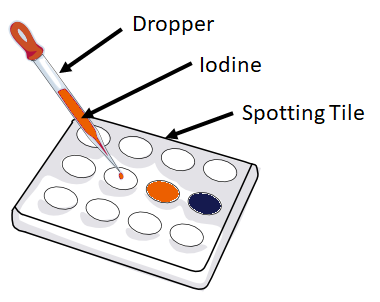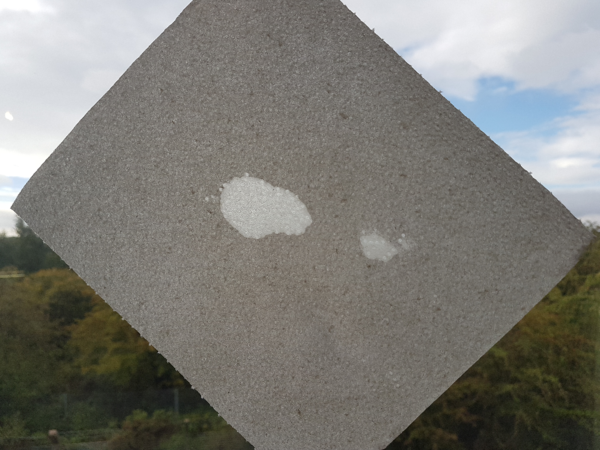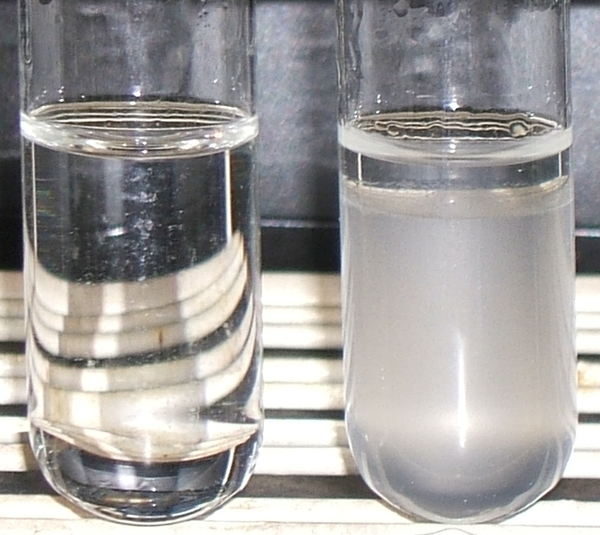Difference between revisions of "GCSE Biology Required Practical: Food Tests"
(Created page with "==Key Stage 4== ===Meaning=== Use a range of tests to identify the presence of Carbohydrates, Proteins and Lipids in food samples.") |
|||
| (5 intermediate revisions by the same user not shown) | |||
| Line 1: | Line 1: | ||
==Key Stage 4== | ==Key Stage 4== | ||
| + | {{#ev:youtube|https://www.youtube.com/watch?v=akMLGbNA0gE}} | ||
===Meaning=== | ===Meaning=== | ||
Use a range of tests to identify the presence of [[Carbohydrate]]s, [[Protein]]s and [[Lipid]]s in food samples. | Use a range of tests to identify the presence of [[Carbohydrate]]s, [[Protein]]s and [[Lipid]]s in food samples. | ||
| + | ===Methods=== | ||
| + | ====Testing For Monosaccharides==== | ||
| + | : [[Monosaccharide]]s can be detected with the [[Benedict's Test]]. | ||
| + | : [[Disaccharide]]s cannot be detected with the [[Benedict's Test]] unless you first react it with dilute [[Hydrochloric Acid|hydrochloric acid]]. | ||
| + | =====Method===== | ||
| + | #A sample of food is dissolved in water. | ||
| + | #The solution is added to blue Benedict's solution in a boiling tube. | ||
| + | #The solution is kept at 90°C for up to 10 minutes. | ||
| + | #A colour change indicates the presence of [[glucose]] or [[fructose]]. If they are present the solution will eventually turn brick red or brown. | ||
| + | {| class="wikitable" | ||
| + | |- | ||
| + | |[[File:BenedictsTest.png|center|600px]] | ||
| + | |- | ||
| + | | style="height:20px; width:600px; text-align:center;" |When sugar is present the Benedict's solution turns from blue through several colours until it becomes brick red or brown. | ||
| + | If this was done with sucrose the Benedict's solution would stay blue. | ||
| + | |} | ||
| + | |||
| + | ====Testing for Starch==== | ||
| + | : [[Starch]] can be detected using Iodine Solution. | ||
| + | =====Method===== | ||
| + | #A small sample of food is placed on a spotting tile. | ||
| + | #A drop of Iodine Solution is added to the food sample. | ||
| + | #If the Iodine solution turns from orange to blue-black then the food contains [[starch]]. | ||
| + | {| class="wikitable" | ||
| + | |- | ||
| + | |[[File:IodineStarch.png|center|400px]] | ||
| + | |- | ||
| + | | style="height:20px; width:400px; text-align:center;" |Iodine solution is an orange liquid. When the iodine solution is added to starch the iodine solution turns from orange to blue-black. | ||
| + | |} | ||
| + | |||
| + | ===Testing For Protein=== | ||
| + | : Adding [[protein]] to [[Biuret]] [[solution]] will cause the [[solution]] to turn purple. | ||
| + | =====Method===== | ||
| + | #Take a small sample of food and [[dissolve]] it in [[water]]. | ||
| + | #Add some [[Biuret]] to the [[solution]]. | ||
| + | #If it turns from blue to purple then the food contained [[protein]]. | ||
| + | |||
| + | {| class="wikitable" | ||
| + | |- | ||
| + | |[[File:Biuret.png|center|300px]] | ||
| + | |- | ||
| + | | style="height:20px; width:300px; text-align:center;" |This [[Biuret]] has turned purple, indicating protein is present. | ||
| + | |} | ||
| + | |||
| + | ===Testing For Lipids=== | ||
| + | : Adding [[lipid]]s to paper can turn the paper [[translucent]]. | ||
| + | =====The Paper Test Method===== | ||
| + | #Take a small sample of food. | ||
| + | #Wipe it on a piece of paper. | ||
| + | #Hold the paper up to the light. | ||
| + | #If the paper has turned [[translucent]] the food contained [[lipid]]s. | ||
| + | |||
| + | {| class="wikitable" | ||
| + | |- | ||
| + | |[[File:FatTest.png|center|600px]] | ||
| + | |- | ||
| + | | style="height:20px; width:600px; text-align:center;" |There are two patches where fat has been asborbed by the paper. | ||
| + | |} | ||
| + | |||
| + | =====The Alcohol Emulsion Test Method===== | ||
| + | #Take a small sample of food. | ||
| + | #Place the food in [[ethanol]] and mix by shaking or stirring. | ||
| + | #[[Filter]] the [[mixture]]. | ||
| + | #Add the clear [[solution]] to some water. | ||
| + | #If lipids are present then a white [[emulsion]] will appear. | ||
| + | |||
| + | {| class="wikitable" | ||
| + | |- | ||
| + | |[[File:AlcoholEmulsionTest.png|center|600px]] | ||
| + | |- | ||
| + | | style="height:20px; width:600px; text-align:center;" |The mixture on the right shows the presence of [[lipid]]s. | ||
| + | |} | ||
Latest revision as of 11:02, 13 April 2019
Contents
Key Stage 4
Meaning
Use a range of tests to identify the presence of Carbohydrates, Proteins and Lipids in food samples.
Methods
Testing For Monosaccharides
- Monosaccharides can be detected with the Benedict's Test.
- Disaccharides cannot be detected with the Benedict's Test unless you first react it with dilute hydrochloric acid.
Method
- A sample of food is dissolved in water.
- The solution is added to blue Benedict's solution in a boiling tube.
- The solution is kept at 90°C for up to 10 minutes.
- A colour change indicates the presence of glucose or fructose. If they are present the solution will eventually turn brick red or brown.
| When sugar is present the Benedict's solution turns from blue through several colours until it becomes brick red or brown.
If this was done with sucrose the Benedict's solution would stay blue. |
Testing for Starch
- Starch can be detected using Iodine Solution.
Method
- A small sample of food is placed on a spotting tile.
- A drop of Iodine Solution is added to the food sample.
- If the Iodine solution turns from orange to blue-black then the food contains starch.
| Iodine solution is an orange liquid. When the iodine solution is added to starch the iodine solution turns from orange to blue-black. |
Testing For Protein
Method
- Take a small sample of food and dissolve it in water.
- Add some Biuret to the solution.
- If it turns from blue to purple then the food contained protein.
| This Biuret has turned purple, indicating protein is present. |
Testing For Lipids
- Adding lipids to paper can turn the paper translucent.
The Paper Test Method
- Take a small sample of food.
- Wipe it on a piece of paper.
- Hold the paper up to the light.
- If the paper has turned translucent the food contained lipids.
| There are two patches where fat has been asborbed by the paper. |
The Alcohol Emulsion Test Method
- Take a small sample of food.
- Place the food in ethanol and mix by shaking or stirring.
- Filter the mixture.
- Add the clear solution to some water.
- If lipids are present then a white emulsion will appear.
| The mixture on the right shows the presence of lipids. |




